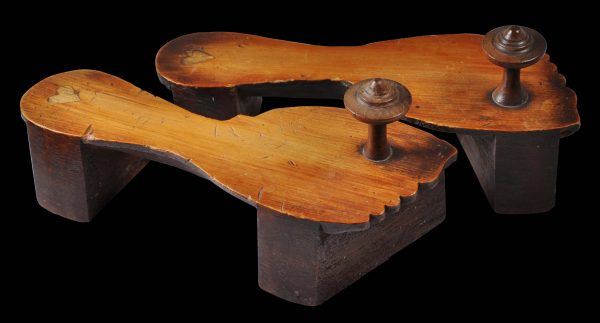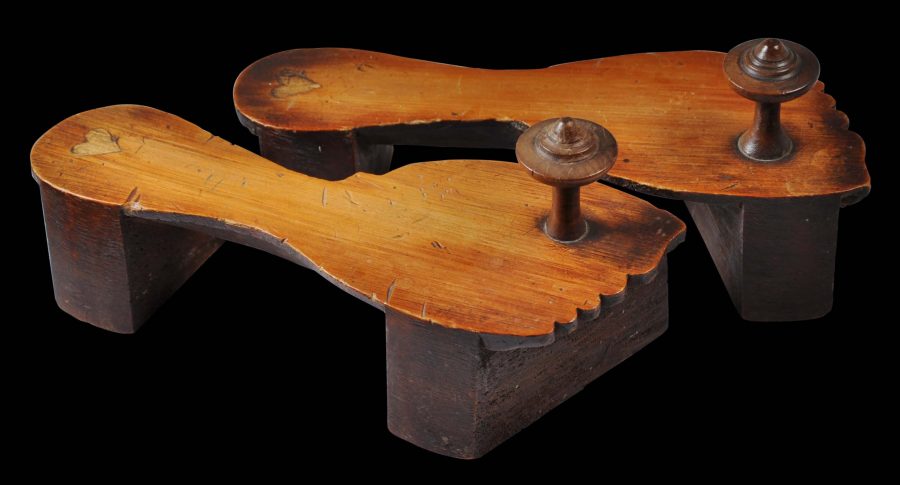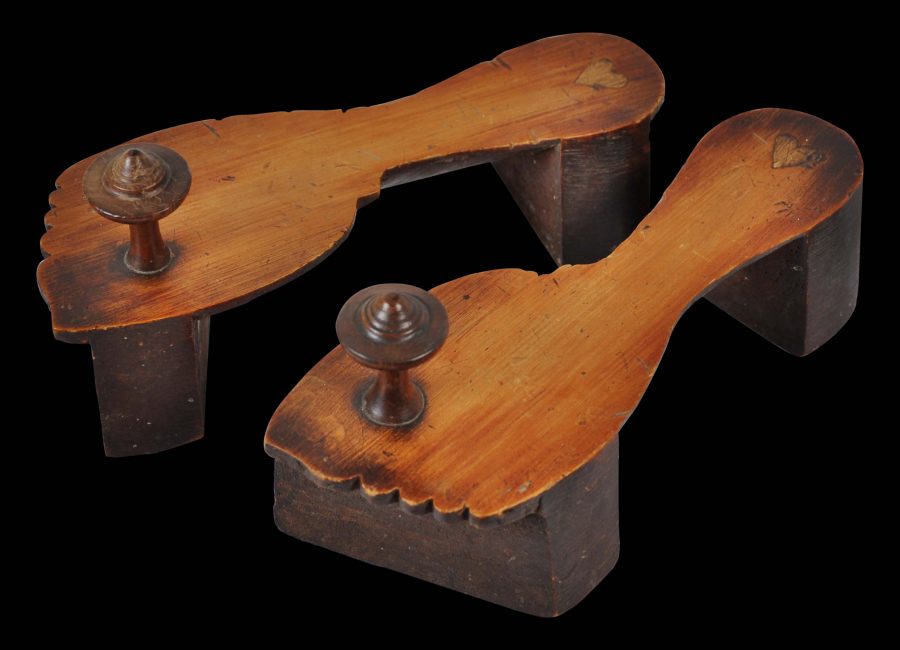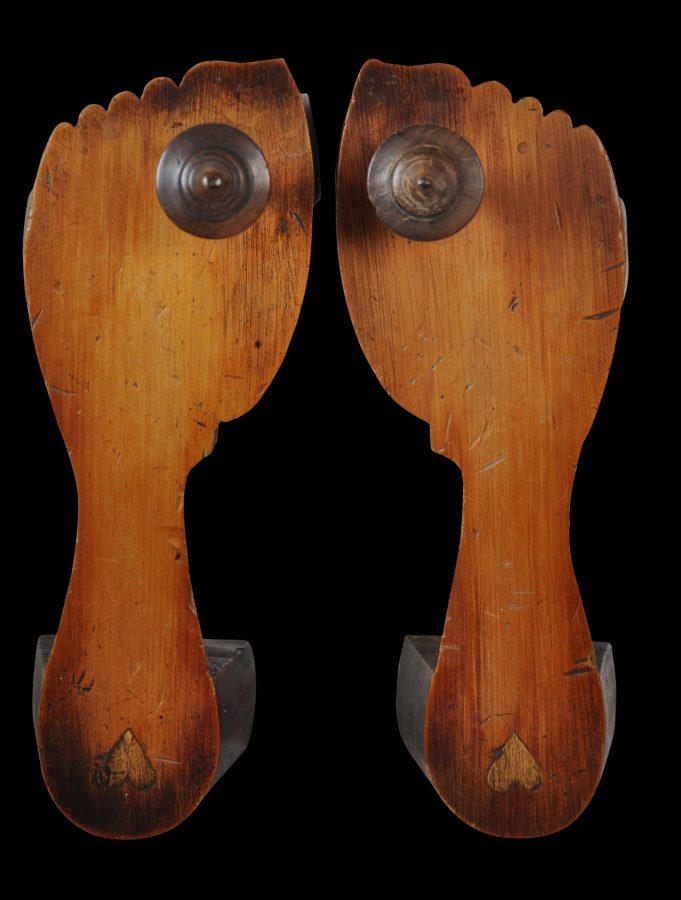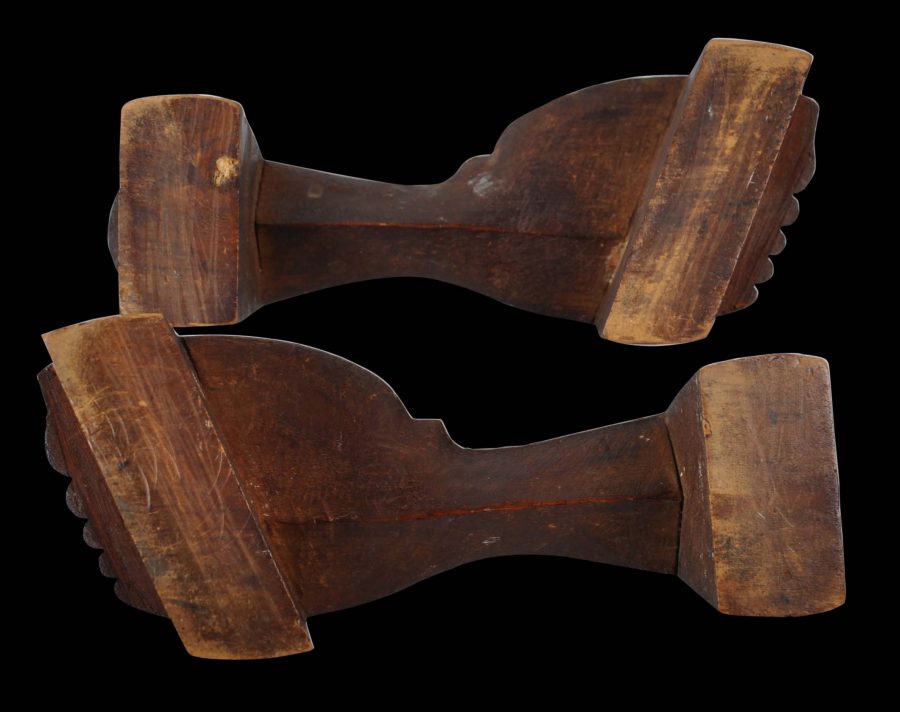Ostensibly, this pair of paduka-style wooden clogs are Indian, but in fact, they are more likely to be of Malay origin. Other than the toe knobs, each is carved from a single piece of wood.
A similar pair in the British Museum can be seen here. According to the Museum’s records, the pair entered the collection between 1860 and 1869 and were believed to be Malay or possibly Indian.
The are carved from wood. The souls have been cut in the shape of a foot, including crenulations at the front to suggest toes. The heels are inset with heart shapes, cut out from a lighter-coloured wood. These extra decorative elements are not typically Indian and accord more with a Malay preference for whimsical decoration.
Each is fitted with a single, high toe knob, made from turned wood, which again, has the appearance of having been turned by a Malay wood worker in its styling.
Both are on high platforms which taper outwards.
Malay platform clogs are rare but not unknown. The practice of wearing them would have been copied from elsewhere in the Islamic world such as northern India and the Ottoman empire, and given all the interaction and travel within the Islamic world on account of travels associated with the haj, habits and fashions spread readily across the world along haj and trade routes. Generally they were used during bathing.
Jasper & Pirngadie (1930, p. 135) illustrate a single clog cut from brass and from Java which has similar toe-outlines and so on, further suggesting the Southeast Asian origins of both the pair here and those in the British Museum.
The pair here have a splendid patina and the wood has a warm yellow hue from age. They are in fine condition.
References
Jasper, J.E. & Pirngadie, De Inlandsche Kunstnijverheid in Nederlandsch Indie V: de Bewerking van Niet-Edele Metalen, 1930 (reprinted 2009 by Sidestone Press, Leiden).


